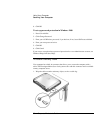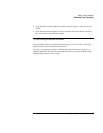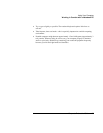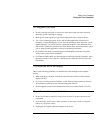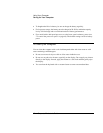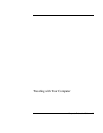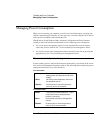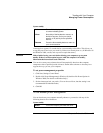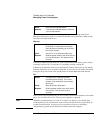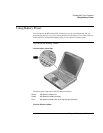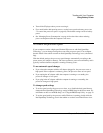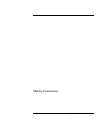
Traveling with Your Computer
Managing Power Consumption
44 Corporate Evaluator’s Guide
Managing Power Consumption
When you are not using your computer, you will want to maximize battery operating time
without compromising performance. It is not necessary to turn the computer off in order to
reduce power consumption and extend battery life.
With Windows 98 and Windows 2000, Advanced Configuration and Power Interface
(ACPI) provides both manual and automated tools for reducing power consumption.
• You can set power management options to occur automatically, based on timeout
values that you have entered. See “To use automated power management” below.
• You can also invoke power management options manually at any time by pressing the
appropriate key. See “To use manual power management” below.
To use automated power management
System standby, monitor, and hard disk timeouts automatically occur based on the values
set in the Power Management Properties window. The following tables describe the power
management timeouts you can set in Windows.
Turn off monitor
Action Turns off the display. This conserves
battery power and extends the life of the
display.
When No activity of the keyboard or mouse for
the specified interval.
Resume Press any key or move the pointer to
return to your current session.
Turn off hard disk
Action Turns off only the hard disk drive. This is
usually set to occur shortly after the
monitor is turned off.
When No hard disk access for the specified
interval.
Resume Press any key or move the pointer to
return to your current session.



